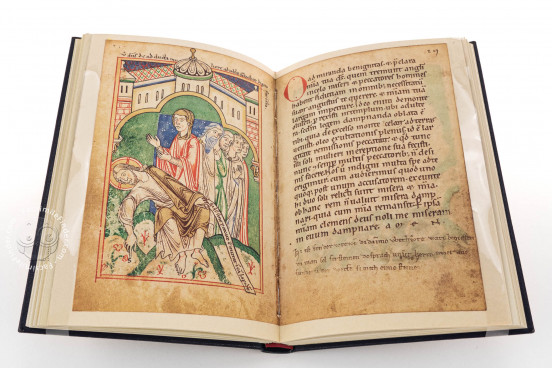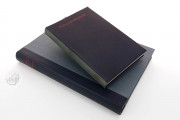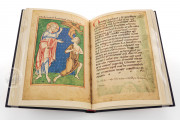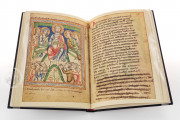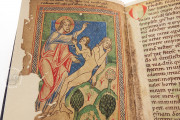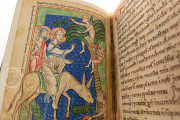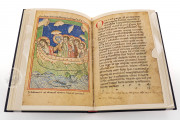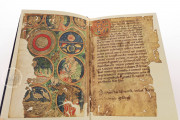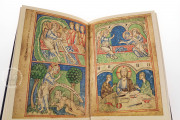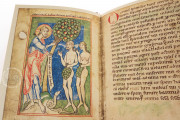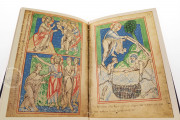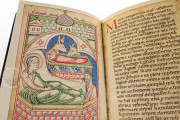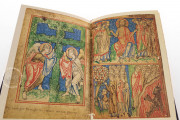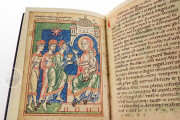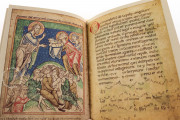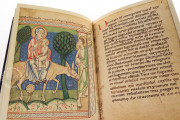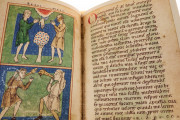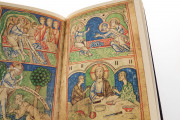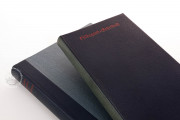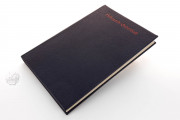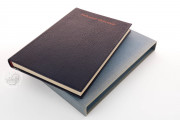Saint Hildegard's Prayer Book was created in the late twelfth century in the middle Rhenish region of Germany. The book contains dozens of non-liturgical Christian prayers accompanied by seventy-one full-page miniatures of Old Testament and Gospel events. Although traditionally ascribed to the visionary theologian Hildegard of Bingen (1098-1179), the prayers are not examples of her writing. The prayer book was written by two scribes for a female owner. Although it is uncertain whether it was owned by Hildegard, the book has been associated with the saintly visionary for centuries.
The manuscript is the most extensively illuminated example from a group of early illustrated prayer books made in Germany in the twelfth century and inspired several direct copies. The pictures, colored with muted, earthy tones, feature strong lines, complex narrative compositions, and powerful emotional resonance and focus on the connection of humanity to the divine. Although the prayers are in Latin, German captions in a twelfth-century Rhenish dialect were added to accompany the illuminations. A striking example of an early book for private devotion, Hildegard's prayer book is an exceptional example of Romanesque illumination.
The Combination of Pictures and Prayer
The prayer book is one of a group of Romanesque German manuscripts that combine private prayers with elaborate pictorial cycles of Christian iconography, creating two manuscripts in one. In the case of Hildegard's manuscript, the prayers themselves are a patchwork of contemporary invocations, while the eighty-two-scene picture cycle of Old Testament and Gospel narratives focuses on human contact with the divine and the suffering of Christ.
A Book of Prayers for a Woman
The dozens of prayers preserved in this book are written by two scribes in two distinct versions of the Transitional Script of the long twelfth century. The prayers in the first half were executed first and were written with masculine pronouns, but these were erased and corrected to be feminine pronouns by the scribe of the second half, which was written with feminine pronouns. This suggests the intended recipient of the prayers changed, or that the first scribe did not consider such personalization while writing his portion.
Private Prayer in Twelfth-Century Germany
This book may be the most lavishly illustrated, but it is not the only example of a book created for private devotion in twelfth-century Germany. It is one of a family of manuscripts that is evidence of the growing appetite for illuminated prayer books. These would mark the beginnings of the rise in books for private devotion that would become a feature of religious life throughout medieval Europe.
We have 1 facsimile edition of the manuscript "Saint Hildegard's Prayer Book": Hildegard-Gebetbuch facsimile edition, published by Reichert Verlag, 1982
Request Info / Price
